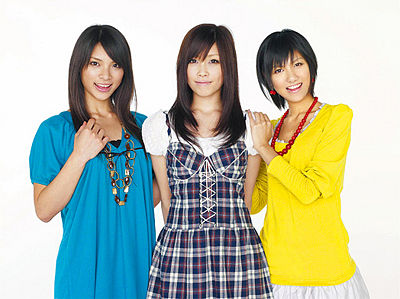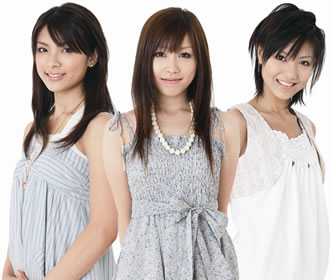While in Japan, I caught a few episodes of the second season on TV. It was interesting, but I didn't really become invested in the series until just before I left. My friend had begun reading the manga and was very enthusiastic about it, so I picked up the first three volumes and gave them a read, trying my best to follow the story. Being a seinen manga, the kanji lack accompanying furigana, so I miss some of the finer points. Still, for those readers unfamiliar with the series, I'll do my best to offer up a brief synopsis.
Liar game follows Nao Kanzaki, a young and incredibly honest girl who is drafted into the liar game, a mysterious tournament where players are encouraged to lie and cheat others out of money in order to succeed. Fooled early on by her first rival, Nao seeks the aid of the clever con artist Shinichi Akiyama. Together, they compete in progressively complex games of deception and treachery, always managing to come out on top but also never managing to leave the game completely. They meet various people throughout the games and forge occasional alliances and friendships. However, due to the nature of the game, these relationships are tenuous at best.
PLOT
I'll try to keep my critique as brief and spoiler free as possible. As far as the base story goes, the plot is pretty simplistic. Nao believed the tournament was over and that she was finally free of liar game, but it turns out there's a final stage. A few of the players from the television series return along with some new faces, but they largely serve as a means to push the story forward rather than as fully realized characters. Honestly though the real reason to watch this series is to see the game in action, to watch the various betrayals and try to figure out how characters will try and rig the game in their favor. To that end the movie does a pretty good job. The game's rules are simple enough to follow, yet allow for some leeway for some really clever twists. There are a few minor points I could argue were a bit weak, but overall it's everything I've come to expect from the franchise.
PLOT
I'll try to keep my critique as brief and spoiler free as possible. As far as the base story goes, the plot is pretty simplistic. Nao believed the tournament was over and that she was finally free of liar game, but it turns out there's a final stage. A few of the players from the television series return along with some new faces, but they largely serve as a means to push the story forward rather than as fully realized characters. Honestly though the real reason to watch this series is to see the game in action, to watch the various betrayals and try to figure out how characters will try and rig the game in their favor. To that end the movie does a pretty good job. The game's rules are simple enough to follow, yet allow for some leeway for some really clever twists. There are a few minor points I could argue were a bit weak, but overall it's everything I've come to expect from the franchise.
CHARACTERS/ACTING
As I said, most of the characters more or less bleed into the background until it comes time for their all too predictable betrayal. It seems almost everyone gets a chance to ham it up with some over the top laughter or slow motion drop to their knees.
 |
| It's not a spoiler if they all do it. |
One could argue that Liar Game is meant to be about a multitude of things: the destructive nature of greed, the need for trust and cooperation, or power of forgiveness. However, what truly makes all this work is the relationship between Nao and Akiyama.
Nao is an idealist. She believes there is some good in all people and honestly believes that if everyone just worked together, things would turn out alright in the end. What's more is that it has been proven time and again that she is correct in this assertion.
Though Toda Erika might not be the spitting image of Nao in the comics, I think she pulls of the look pretty well. More importantly, she does an excellent job bringing Nao's childlike innocence to life. Toda is capable of shifting from Nao's usual timidity to shock and even jubilation without ever feeling like she is trying too hard.
While I don't feel that Matsuda Shota resembles his manga counterpart at all, I again feel he does justice to the character. Unlike Nao, Akiyama is a realist, though he tries to help Nao bring people together. Matsuda arguably has a tougher job than Toda, as his character must frequently join the fray of the others, laughing derisively and dramatically revealing his plots. Though he does occasionally drift over into the realm of overacting, he certainly does a better job than most.
The two really shine when they're onscreen together. They definitely have some sort of chemistry, though I appreciate that their relationship is never forced into being anything more than it is. Akiyama admires Noa's unfailing spirit and tries to protect and help her in any way he can. You can tell this is difficult for him at times, even within this one movie. Nao relies almost exclusively on Akiyama to help her through tough times, as he is the only person she has a true and lasting friendship with. While some may see this as a weakness, it just makes those moments where Nao pulls off an amazing plan all the more exciting. Besides, at the end of the day it's Nao's empathic nature that usually pulls a group together.
STYLE
This movie uses slowmotion, ramping, and repetition a lot. It also utilizes a number of distortion effects, making the screen fade and jump like an old television set on the fritz. While I understand the production teams desire to make the events of the film more flashy (this is after all a movie about a bunch of people sitting in a room together) there are times when it comes off as just too much. For instance, there is a point early on when the camera slows down and then speeds up over a coffee table where two characters are talking. Nothing really exciting is happening, they're just sitting there. It's weird. Other times it's a case of just a little too much flair all at once. When Akiyama makes his entrance, their is so much ramping and distortion that the end result is just difficult to look at rather than being cool. The slowmotion is tame by comparison but after the third person falls to their knees in disbelief it's kind of lost its effect.
The soundtrack is great if a little out of synch with the mood at times. Most of the music is provided by the Japanese electronica band "capsule" and while it plays well for most scenes, it comes off as a little too upbeat once or twice. I think the set looks awesome and manages to be both beautiful and dark, punctuating the tense scenes as well as the uplifting ones. The colors likewise help in this regard, though there is a dream sequence that I feel was just a little too extreme in its use of pastels. Again, I understand the intent, but the execution was a bit jarring.
WORDS YOU MIGHT SHOULD KNOW
I thought it would be a fun idea to provide a short vocabulary list for anyone wanting to attempt watching this movie or reading the series in its native Japanese. This is by no means comprehensive, but it's a start.
億(おく)- One hundred million (100,000,000)
勝ち(かち)- Win
負け(まけ)- Lose
裏切り(うらぎり)- Betrayal
投票(とうひょう)- Vote
結果(けっか)- Result
揃う(そろう)- Full set
正直(しょうじき)- Honest (Nao is called "バカ正直" or "stupidly honest")
FINAL THOUGHTS
If you're familiar with the series and enjoy it, I'd definitely recommend picking up this title if you haven't already. It doesn't break the formula or anything but it is an enjoyable ride nonetheless. Newcomers to the series might have difficulty with the sudden influx of characters early on, but rest assured that an intimate knowledge of the show is not a prerequisite to enjoy it. If you like a movie with lots of twists and turns or delight in trying to figure out puzzles, I think you'll get a kick out of this film. Those who are looking for big action scenes or special effects, however, may find the locked room scenario and extended monologues a touch dull. Just be aware that this movie focuses a lot more on mental one-upsmanship than outright fighting. You can, of course, get a copy of your own at CDJapan.

































